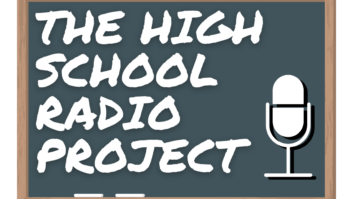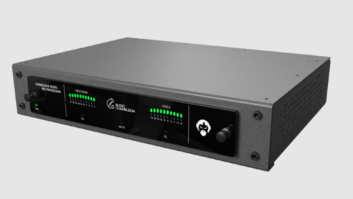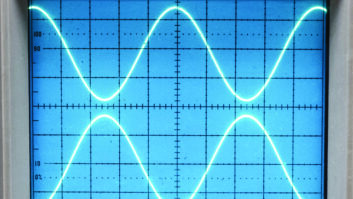In May, the NPR program “JazzSet With Dee Dee Bridgewater” will feature a recording of the Count Basie Orchestra at the 1,380-seat University of Michigan Power Center in Ann Arbor. The program will be aired by 140 stations to approximately 200,000 listeners.
Recording Engineer Mike Pappas performed two mixes: a stereo mix for broadcast on “JazzSet” and a six-channel surround mix to demonstrate high-resolution Sony Direct Stream Digital, or DSD, recording technology. The stereo recording also used DSD.
The performance was part of a tribute to Duke Ellington hosted by the university’s jazz program. It marked the first time Ellington’s “Night Creature” has been captured digitally with full orchestration.
Radio World spoke with Pappas about this project, which involved unusual use of digital technology for a radio application. Pappas also is chief engineer at KUVO(FM) in Denver.
RW: You recorded this both in conventional stereo and in Surround using Direct Stream Digital.Why?
Pappas: The conventional stereo mix is the primary focus. The six-channel Surround aspect was a technology demonstration. It’s my feeling that we broadcasters had better be looking at future technologies if we are going to effectively compete in the marketplace.
(click thumbnail)Mike Pappas works the recording board. Photo: The University of Michigan Photo Services, by Marcia L. Ledford
I read that people were buying the new high-resolution formats – DVD-A and SACD – primarily for the Surround aspect. The high-res aspect placed third in the buying decision. So we broadcasters had better start getting a clue about this technology, even if there currently isn’t a broadcast delivery technology. Do you want to be caught off guard? I don’t.
Direct Stream Digital is the Sony high-res format. It is a single-bit Delta Sigma system that samples at 64 times the compact disk sample frequency of 44.1 kHz. Its sample frequency is 2.8 MHz and it offers 100+ kHz bandwidth and a signal-to-noise ratio of greater than 115 dB.
Fritz Plays a RoleAfter the “JazzSet” recording, Sennheiser and Neumann issued a press release detailing the use of their microphones in the project.
The manufacturer said Pappas captured the stereo recording with a coincident stereo pair of miniature Neumann SKM 140s augmented by a number of highlight microphones. Important instruments were treated with small-diaphragm Neumann KM 184s, large-diaphragm Neumann TLM 103s, omni-directional Sennheiser MKH 20s or pressure-gradient Sennheiser MKH 40s depending on the situation.
Instrumental soloists received a Neumann U 87Ai, and vocalists received a Neumann KMS 105 live vocal condenser.
To record the University of Michigan Symphony, Pappas arranged a pair of Neumann KM 84s in ORTF. “It’s like a 1950’s film noir soundtrack,” Pappas told Sennheiser. “You can see the black-and-white film stock and shots of mysterious cars driving down wet streets – it’s exactly what I mixed it for.”
Pappas captured the audience and room ambience using the Neumann KU 100. Known as “Fritz,” the KU 100 is Neumann’s binaural dummy head, which typically captures three-dimensional information for reproduction in headphones. Pappas placed Fritz nine rows back and 25 feet in the air, facing the head towards the back wall to attenuate the direct sound from the stage and to accentuate the reverb.
The surround mix used three extended-frequency Sennheiser MKH 800s for the left, center and right channels. A Neumann M 150 at 25 feet served as a height microphone, and Fritz’s outputs were routed to the rear channels.
The dimensional characteristic of the Fritz-captured reverb impressed the engineers.
“I played it for a bunch of colleagues at KUVO,” Pappas told Sennheiser. “When it was over, I had to scrape their jaws up off the floor and put them back in their heads.”
The problem with single-bit systems in the past has been noise. Sony, in cooperation with Philips, developed a method of using noise-shaping to place the noise artifacts that occur outside of the audio band.
DSD solves all of the problems that PCM has. It does this by skipping the decimation process that PCM digital uses. In virtually all PCM converters, the audio is sampled as single-bit. From there it is run through a decimation filter with assigns an absolute value to it. The decimation process is where thing go wrong in PCM.
Problems of PCMs include inverted distortion – distortion increases at lower levels which is just the opposite way we hear things – as well as twos conversion, when you go from a one with as many zeros as you have bits, to zero with as many ones as you have bits. When this switch happens – and it happens thousands of times every second – it generates all kind of glitches and contaminates the power supplies inside of the converter chips, and it gets into everything – and the fact that any time you have levels that are less than full-scale, your resolution decreases.
Even with the “high-res” digital formats, you still need brick wall anti-aliasing filters, and the DVD-A format’s 96 kHz/24 bit sampling rate only gets you a 48 kHz bandwidth and not much better than 110 dB signal-to-noise ratio. And PCM converter technology is not making great strides to meet the promise of 24-bit’s 144 dB signal-to-noise.
On the DSD front, we get around all of these problems by just wanting to know: “Is the signal going up or down – Delta Sigma – compared to the previous sample?” Very simple and very music-friendly.
DSD has a consumer delivery format called Super Audio Compact Disk, or SACD, which, unlike DVD-A, offers a hybrid version that is fully backward-compatible with almost 1 billion existing legacy CD players.
Also, since it samples at an even multiple of the existing CD format, we can use the Sony-developed Super Bit Mapping technology to take the DSD and convert it to 44.1 kHz at either 16 or 24 bits without having to do math tricks. All of the EMM Labs converters we use have this SBM output available for use with our DAT machines and digital plant. Any way you try to slice it, the DVD-A 96 kHz sampling frequency doesn’t evenly divide into 44.1 kHz.
Now why did we go to all of the hassle recording this in DSD? Simply because it sounds better than PCM even when run through an FM chain with its 15 kHz bandwidth limitation. It even makes better-sounding 44.1 than using stock PCM converters.
RW: Who paid for the cost of the special digital gear to do this?
Pappas: I own all of the special gear necessary. In fact, KUVO and I have been recording all of our live performances in DSD since 1999.
RW: Why should Radio World readers be interested in this experiment? Expand on your comments about the possibilities for high-resolution recording.
Pappas: This remote will be shipped to NPR affiliates nationwide. “JazzSet” is one of the hottest jazz programs that NPR distributes. They have a huge commitment to making the best recordings possible, and they spent a lot of time and effort to send me out and make this recording for them.
Second, we need to look at high-res formats as broadcasters. IBOC is just around the corner and I personally would like a vault of high-res sessions to feed our listeners when we put it on the air – and at KUVO we are working with Nautel to beta-test their IBOC exciter when it becomes available.
We need to be able to compete for listeners not just from other broadcasters but other delivery formats. The sat guys, XM and Sirius, are pushing the better-quality aspect, of their product very hard, and we terrestrial guys had better have an answer. I think it’s high-res and IBOC.
Third, Surround may become the future of broadcast. Who is to say it won’t? If consumers demand it, someone will figure out a way to deliver it and we broadcasters had better have a clue about it.
Also, the manufactures always give you press folks all of these great propaganda releases about their latest wiz-bang products but they don’t show you how people are using them. Here is a great example of lots of cutting-edge gear in action.
RW: Talk about the equipment used and how you accomplished the project technically.
Pappas: The heart of this project is the Genex Research GX-8500 multi format recorder. The Genex is the “Vegimatic” of digital recorders. It will record any digital format extant: 44.1, 48, 88.2, 96, 176.4, 192 at up to 24 bits and DSD. It records to hard disks or MO disks and records eight channels at a time.The machine is solid and reliable.
We are using EMM Labs/Ed Meitner converters to take analog signals from the mics and convert it into DSD. Ed’s converters are really great-sounding and he understands what happens at the point where analog becomes bits like no one I have ever met.
Of course the most important part of any recording chain is the microphones. For this project I used a wide variety of Neumann and Sennheiser microphones.
So how did we put this all together?
The conventional stereo mix was created from a matched pair of Neumann SKM-140 condenser mics. Highlight mics from Neumann and Sennheiser were used to “help” players that may need a little extra support. A Neumann stereo dummy head mic named Fritz was used to provide the “audience.”
For the Surround’s Left/Center/Right channel, we used Sennheiser MKH-800 50 kHz multi pattern microphones. For Height, we used the Neumann M-150 tube mic; for Rear Left/Right, we split the feed from the Neumann stereo dummy head mic. (See sidebar.)
All mics were preamplified on stage using Grace Design 801R remote-controlled microphone preamps. The amplified Surround mics went directly into the EMM Labs converters.
The stereo mix was mixed on a Mackie 8*Bus mixer and then converted to DSD. All of the microphone cables were custom-built by Cardas Audio Ltd. I used DAS Monitors in the control room and intercom by Telex/RTS to talk to my soloist spotters and stage techs.
RW: Now that the project is complete, what did you learn that might be of use to radio engineers on similar projects in the future?
Pappas: All of the hours I spent and hundreds of e-mails that were sent to all of the parties at the preplanning stage of this project really paid off. When you are a thousand miles from your plant, you have to make sure you have covered yourself for any contingency imaginable.
I think I could have done open-heart surgery with all of the gear that I brought along as extra. Having a “game plan” as to how you are going to get your gear there in one piece (thanks, FedEx) and making sure you have everything you need is a good place to start.
It also pays to check out the local radio station and see if they are willing to help keep a fellow broadcaster out of trouble. I was fortunate to be able to tap into the University of Michigan radio station WEMU staff for assistance. Linda Yohn, James Cornish and Nik Thompson from WEMU graciously pitched in and helped out with this project from the planning stages to loading up the van at the end of the show.
Christopher Konovaliv, the audio coordinator at the U of M, heard about the Basie session from Dennis Wilson, professor at the School of Music, and showed up to help out. He proved to be invaluable when I ran into a glitch and need some help that was outside of my area of expertise.
Coordinating with the staff at the U of M Power Center made the load in and setup smooth. I had the house PA system input list in an Excel spreadsheet two weeks before the event. I was able to work with the front-of-house mixer, Roger Arnett, to determine what mics we were going to share and what their assignments were going to be in the snakes and splitters. This saved hours of time that we didn’t have on site.
I try to enroll the equipment manufacturers in these types of projects. For example, Rob Treloar at Sennheiser/Neumann suggested I try the Neumann stereo dummy head microphone for the audience pickup and arranging to get me one to use. I can’t tell you how glad I am that I followed his suggestion, the mic sounded great.
All of my critical gear vendors knew what I was doing, why it was important and what the dates were. This is a real confidence-booster when you are in a “only one shot at getting it right” situation.













